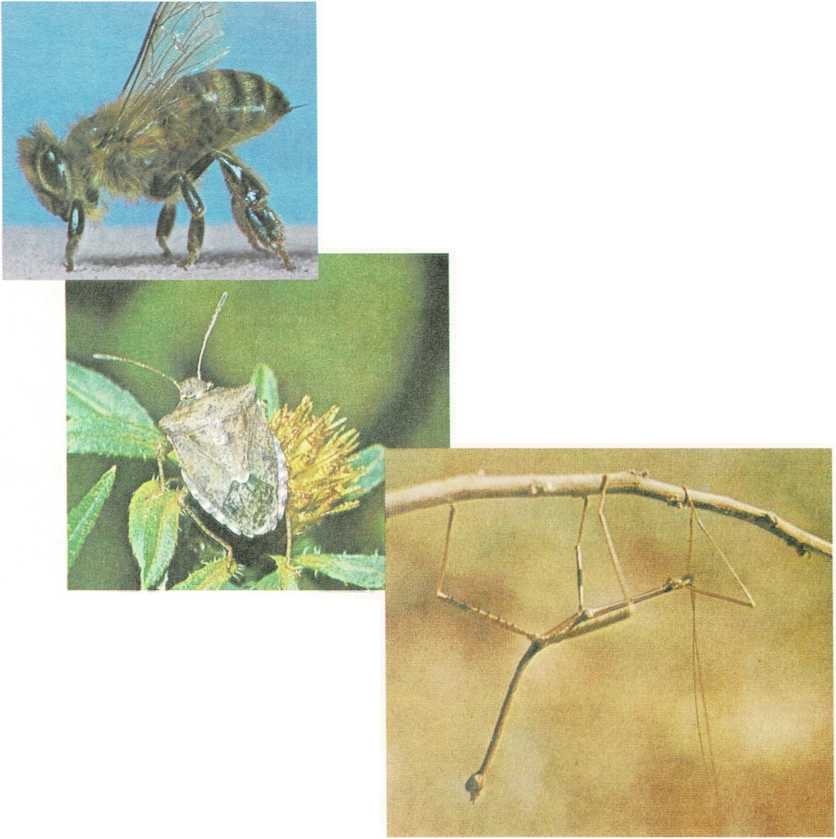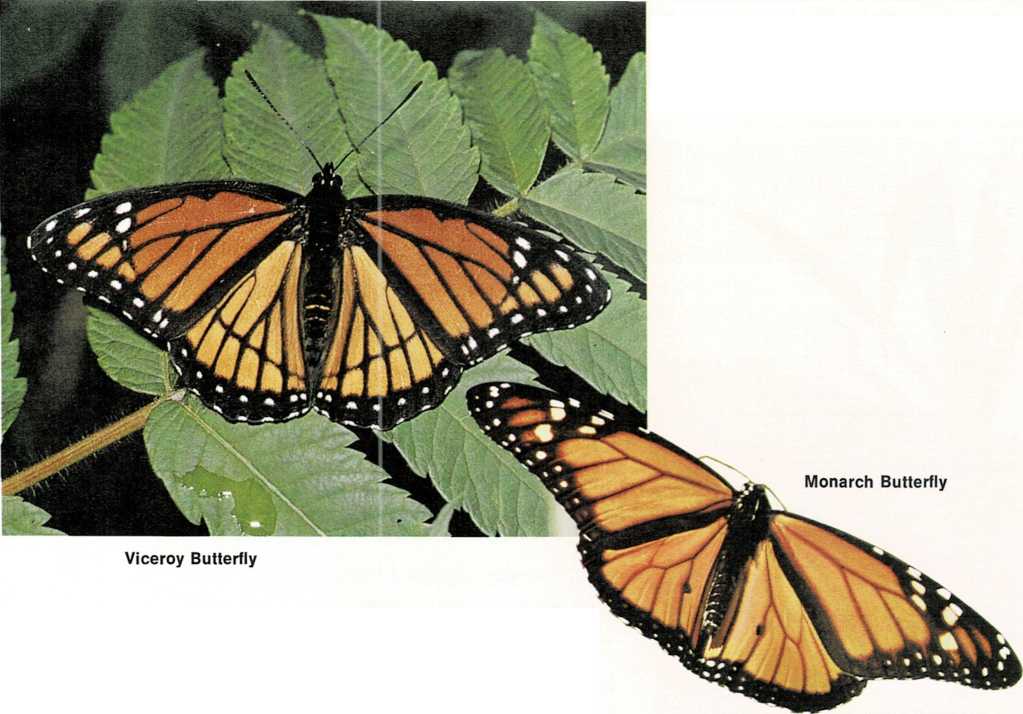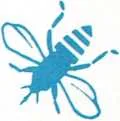Protection for insects

Insects are always in danger from many other animals. But many insects
have ways of protecting themselves.
Many insects can fight back if they are attacked. Wasps, bees, hornets,
and some other insects can give painful stings. Stinkbugs chase other
insects away by spraying- bad smells at them. The bombardier beetle
shoots out a stinging, bad-tasting spray that will even chase frogs
away.
Some insects are good at pretending to be something else. They don’t do
this on purpose, of course—they’re just made that way. But when a
katydid sits on a branch it
The bee’s sting protects it.
Honeybee
This insect’s shape protects it.
Walking Stick

Stinkbug
A bad smell protects this bug.

looks like a leaf. Many kinds of moths look like pieces of tree bark.
And walking sticks and some moth caterpillars look like twigs. Looking
like something else is a good way for these insects to hide from other
animals that might eat them.
Ladybugs, monarch butterflies, and some other insects taste bad. These
insects are always brightly colored, usually orange and black. These
colors say, “I taste bad!” Birds learn not to eat these insects. The
insects are protected by their color.
But some insects that don’t taste bad are colored orange and black, too.
Birds are fooled by their colors and leave them alone. So those insects
are protected by their colors, too.
Monarch butterflies taste bad to birds. Birds learn to tell monarch
butterflies by their bright colors, and leave them alone. Viceroy
butterflies don’t taste bad. But they look much like monarch
butterflies, so birds leave them alone, too. Both butterflies are
protected by their bright colors.

